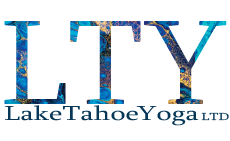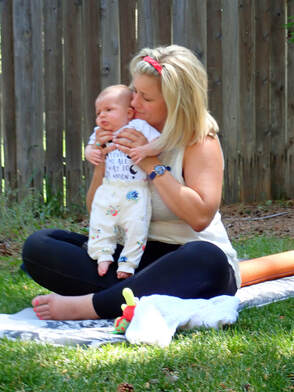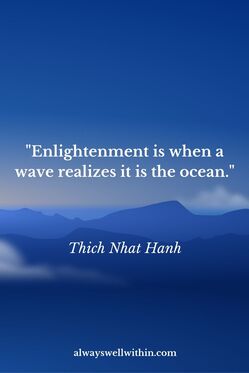|
As a Yoga studio, our job is to share knowledge, experience and philosophies about Yoga. Our hope is that you, our practitioners, will absorb what we share and eventually, begin to do the same. There is a middle ground, though, for all of this. You see, we all have to practice and our practice is more than just what we do in the studio. It is the generalization of the skills we learn in class into our lives. It is a lifestyle.
You are Me
Have you felt the effects of your practice? To find Yoga is to find your Self. In order to get there, you have to restrain (Yamas) your wants and observe (Niyamas) your needs. The way you treat yourself should be reflected in how you treat others. And, if you see yourself as spiritual, holy, god-loved, etc. then you will see all others in this way.
Restrain, Direct, Control
Every posture is a demonstration of the practice of Yama. We move with intention trying to retain the position prescribed in any way that our bodies are able. We can generalize this practice into our lives through the Yamas.
The Yamas are five-fold: Truth, Helping, Generosity, Moderation and Sharing. Living your life with the intention of retaining these aspects of Yoga can shift our perspective and have an effect on others. Imagine if everything you did was guided by these principals. What would you do differently? Observe, Reflect, Realize
Pranayama practices are tools designed to focus and limit our thoughts. These breathing techniques include a count of breaths, length of each, pauses between and various aspects of mudra or mantra. These techniques are the first step in establishing Niyama.
Niyama are five-fold: Purity, Contentment, Self Study, Dedication and Devotion. These practices direct our attention toward our own habits. We live life based upon memories, experiences, wants and desires. Our thoughts and actions are a demonstration of subconscious karma. To practice Niyama is to practice treating yourself well. The more you do so, the better you will treat others. Shift, Adjust, Change
Our continued practice of Yama, Niyama, Asana and Pranayama ultimately leads us toward the additional four limbs: Pratyahara, Dharana, Dhyana and Samadhi.
The more we live a lifestyle of Yama and Niyama, maintain our physical health through Asana and consciously breathe the less our attention will be drawn to distraction (pratyahara). Allowing ourselves opportunities to spend time alone, in quiet spaces allowing our minds to be directed by rhythmic breathing or sound vibrations, the better we become at focusing upon that which is important (dharana). Silencing the chatter of useless thoughts, detaching from toxic people and environments, recognizing that which we can control and letting things happen as they will while remaining present becomes natural (dhyana). Eventually, we will settle into contentment and recognize that we are each a tiny droplet in the ocean of the universe (samadhi).
If you would like to learn more about the eight limbs (asta anga) and the lifestyle of Yoga join the practice with us, book a Private Session or apply to the Lake Tahoe Yoga School.
0 Comments
Our Self is made up of many levels. The koshas are considered the layers of the Self. Manomaya is the layer within which the mind or manas and the emotions are prominent.
Our mind is constantly chattering away. It tells us our desires, needs, dislikes, etc. All of these things are directed by the ego. The ego places labels upon everything we experience. Our emotions are attached to these experiences and, through them, we develop samskaras or impressions. Manomaya is the layer within that we must work the hardest to move beyond. If we can let go of our ego then our mind can quiet. If we can move beyond our emotions, we can view the world with less bias and judgement. Our practice is to let go of these things and become less attached to our self and that which lies outside of us. |
Archives
February 2023
Categories
All
|
© Lake Tahoe Yoga LTD 2020
Lake Tahoe Yoga Studio, School & Retreats
Discover Your Self ™
Zephyr Cove, NV, 89448
(775)580-7224
Design, Graphics and Photos by Jenay
Except as permitted by the copyright law applicable to you, you may not reproduce or communicate any of the content on this website, including files downloadable from this website, without the permission of the copyright owner.
The US Copyright Act allows certain uses of content from the internet without the copyright owner’s permission. This includes uses by educational institutions and by Commonwealth and State governments, provided fair compensation is paid. For more information, see https://www.copyright.gov/title17/title17.pdf.
The owners of copyright in the content on this website may receive compensation for the use of their content by educational institutions and governments, including from licensing schemes managed by Copyright Agency.
We may change these terms of use from time to time. Check before re-using any content from this website.
Lake Tahoe Yoga Studio, School & Retreats
Discover Your Self ™
Zephyr Cove, NV, 89448
(775)580-7224
Design, Graphics and Photos by Jenay
Except as permitted by the copyright law applicable to you, you may not reproduce or communicate any of the content on this website, including files downloadable from this website, without the permission of the copyright owner.
The US Copyright Act allows certain uses of content from the internet without the copyright owner’s permission. This includes uses by educational institutions and by Commonwealth and State governments, provided fair compensation is paid. For more information, see https://www.copyright.gov/title17/title17.pdf.
The owners of copyright in the content on this website may receive compensation for the use of their content by educational institutions and governments, including from licensing schemes managed by Copyright Agency.
We may change these terms of use from time to time. Check before re-using any content from this website.
Lake Tahoe Yoga. Tahoe's premier Yoga studio offering classes, private sessions, paddle yoga. beach yoga, baby and me, prenatal, alignment, vinyasa, athletic, workout, fitness, stillwater, Mindbody, teacher training, Yoga alliance, yoga therapy, bachelorette party, yoga instruction, om, aum, classes, fitness, wellness, active, exercise, athlete, stretch, flexibility, balance, mindful, meditation, restoration, yin, nidra, relaxation, breathing, pranayama, yoga sutra, yamas, niyamas, satya, ahimsa, brahmacharya, ishvara pranidhana, avidya, asteya, tapas, svadhyaya, jnana, aparigraha, wellness, outdoor yoga, corporate yoga, mountain pose, downward dog, asana, practice, tantra, hatha, raja, rajahatha, workshop, yoga workshop, vacation, ayurveda, pitta, vata, kapha, yoga om, omni, yoga shala, yoga for health, accessible yoga, partner yoga, yoga for athletes, yoga for fitness, flexibility, health, wellness, mindfulness, private yoga teacher, private yoga classes, private yoga instruction, downward dog, yoga streches, yoga for kids, yoga Tahoe, south lake Tahoe yoga, south Tahoe yoga, yoga south Tahoe, class pass, wedding yoga, senior yoga, healing, healthcare, yoga near me



 RSS Feed
RSS Feed